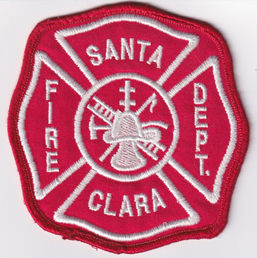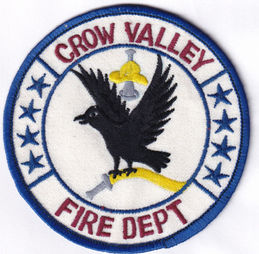FOLLOW US ON INSTAGRAM

Historical Foundations and Early Developments
Lane Fire Authority (LFA) is the direct descendant of seven (7) historical rural fire protection districts.
In early 1942, at the beginning of the United States’ involvement in World War II, residents in the Irving and Santa Clara communities (northwest of the City of Eugene) began organizing and training as auxiliary Civil Defense firefighters. The purpose of this training was to backfill the losses of firefighting personnel to wartime enlistment, and to prepare for the possibility of enemy aerial bombardment.
Residents of the Santa Clara area voted to create the Santa Clara Rural Fire Protection District in September 1943. The district’s fire engine was parked under a lean-to cover at Santa Clara Elementary School through 1949. A second fire engine was purchased, and a formal two-bay fire station was constructed at the corner of River Road and Green Lane, in late 1949 and early 1950. District operations moved across River Road to a new, larger station in 1961.
Meanwhile, business leaders in the Irving area formed a private “fire co-operative” in 1943, utilizing a 1928 Ford Model AA truck that had been outfitted as a fire engine by a local blacksmith shop. Residents of the Irving community voted to convert the private fire service to a public, tax-supported Irving Rural Fire Protection District in July 1944. The district’s fire apparatus were originally kept in a large shed at the Bond Manufacturing Company site on Irvington Drive. A formal fire station was constructed on Hallett Street 1955.
Challenges and Community Contributions
In 1952, Boy Scout Explorer Troop 96 initiated a community service project to acquire a fire engine for the Veneta community. Approximately $1,100 was raised to buy, repair, and outfit a 1941 Chevrolet truck for use as a firefighting unit. A special election resulted in the creation of the Veneta Rural Fire Protection District in August 1953. Local business owners donated land, funds, and materials for the construction of a fire hall near the corner of 4th Street and Dunham Avenue. This site continued as the district’s home until a city hall and fire station complex was constructed at 5th and McCutcheon Streets in late 1967.
Two catastrophic fires in the communities of Alvadore and Franklin, and the announcement by member agencies of the Lane County Firefighters Association that they would no longer respond to fires that occurred in areas that were not within an established fire protection district, resulted in the creation of Alvadore Rural Fire Protection District in August 1960. Community volunteers overhauled a junked 1942 International fire truck purchased from a local farmer, and a stripped-down 1947 6x6 GMC truck obtained from a civil defense surplus equipment auction, to get them into reliable working order, and then mounted water tanks, pumps, emergency lights, and other firefighting equipment on them.
The two pieces of apparatus were housed in a fire station that was constructed on donated land on Alvadore Road, using volunteer labor and donated, discounted, or salvaged building materials. To improve response capabilities for the western portion of the district, another fire station was built, again using donated materials and volunteer labor, on Territorial Road in Franklin in 1969.
A tragic, triple-fatality house fire in Star Camp, located just west of Noti, prompted the residents of the Noti and Elmira communities to vote for the creation of Elmira-Noti Rural Fire Protection District in March 1966. The district had to sign a $ 2,250 note against future tax revenue to buy two 20 - 25 year old fire engines (a1946 Mack, and a 1941 International), but initially had nowhere to house them. For more than a year, the fire apparatus had to be parked in front of the chief’s house on Warthen Road in Elmira. Volunteer labor, donated building materials, and community contributions were used to build a fire station on Fountain Road in Elmira in 1967, and another on Fir Street in Noti in 1968.
A series of house fires and the prospect of substantially-increased property insurance premiums, motivated residents living in the large rural area located to the southwest of Eugene to create Crow Valley Rural Fire Protection District in August 1966. The district obtained two pieces of surplus apparatus from the Los Angeles County Fire Department, a 1936 Seagraves fire engine and a 1939 Seagraves fire engine / water tender combination, and parked them at the gasoline service station located at the intersection of Territorial Road and Central Road. It wasn’t until 1971, that the district’s headquarters and main fire station was finally constructed on donated land behind the gas station. From 1966 through 1980, the district operated without a permanent tax base.
Each year, local residents were asked to approve a levy to fund fire department activities for the following year. The approved budgets were small, $10,000 to $20,000 per year, and barely enough to cover operating costs. Voters finally approved the first tax base for the district in 1980, which, with stable year-to-year funding, allowed it to finally begin a much-needed modernization of its response fleet and facilities. In 1989, four brand-new, custom-built Pierce fire engines were purchased. These reportedly were the first fully-enclosed, four door fire engines in service in Lane County, and helped make the Crow Valley fleet (painted a distinctive lime-yellow color) one of the best amongst volunteer agencies in the county.
By any metric, the community of Walton is a long way from anywhere. To address the need for fire, rescue, and emergency medical response services, a few concerned residents in the Walton area created a non-profit corporation to govern a private volunteer fire department in 1972. This organization was financed by community contributions, and the proceeds from fund-raising events such as potluck dinners, spaghetti feeds, and trap shoots. Two military surplus, GI-chassis trucks were acquired: One that had been converted into a fire engine, and the other that had been converted into a 1,000 gallon water tender. A surplus telephone company repair truck was obtained and reconfigured to serve as a first aid and rescue van.
In December 1977, by an order adopted by the Lane County Board of Commissioners, Walton Rural Fire Protection District was created and all assets of the private fire brigade were transferred to the new district. However, no tax funding was approved for the district meaning that all of its operational costs had to be covered by proceeds from events like bake sales, chicken barbeques, chili dinners, turkey shoots, and highway “safety stops”. It wasn’t until May 1982 that local voters finally approved a stable and predictable source of revenue for the district, a $10,000 annual tax base.
Consolidation and Modernization of Services
Funding was always a challenge for early rural fire protection districts. There just never seemed to be enough funds to buy and maintain quality apparatus and firefighting equipment, obtain required training, and maintain and expand station facilities. And when fire departments began taking on the added responsibility for emergency medical services in the 1970s, it was just one more drain on already limited budgets. Many smaller departments reached the point where they could no longer remain fiscally solvent.
In April 1973, Alvadore RFPD formally merged with neighboring Irving RFPD to form Lane Rural Fire Protection District No. 1 (renamed Lane Rural Fire / Rescue in 1995). The merger was beneficial to both districts: Irving had a stable and sufficient tax base, but declining volunteer participation, while Alvadore had plenty of volunteers, but insufficient funding. The merger allowed for acquisition of additional apparatus, and larger fire stations to be built in both Alvadore (1974) and Irving (1988).
Faced with a budget shortfall approaching a half million dollars in early 1989, Elmira-Noti RFPD and Veneta RFPD combined resources and tax bases in 1989, merging to create the Fernridge Rural Fire Protection District. The Walton RFPD Board of Directors, recognizing that their district could no longer survive at the current, or reasonably foreseeable, level of funding, approved its merger into Fernridge RFPD in 1993. A new fire station, the headquarters for Fernridge RFPD, was constructed on Territorial Highway in 1994.
Understanding the fiscal benefits (economies of scale) that a large fire district would allow, Fernridge RFPD and Crow Valley RFPD began exploring a “merger of equals” in 1992. The two districts did merge in 1995, creating Lane County Fire District No. 1. One of the immediate consequences of the merger was that the modern Crow Valley fleet became available to a much larger geographical area. The larger tax base also allowed Lane County Fire District No. 1 to purchase six, brand-new and custom-built, 3,000 gallon Pierce water tenders, which vastly improved firefighting capabilities in the large rural areas within the district.
Lane County Fire District No. 1 and Lane Rural Fire / Rescue entered into a functional consolidation of operations, to form Lane Fire Authority, in 2012. The two districts formally merged in 2016. Faced with a dwindling tax base due to annexations by the City of Eugene, and a significant decline in the number of people willing and able to actively serve as volunteer firefighters, the Board of Directors of Santa Clara RFPD entered into an intergovernmental agreement with Lane Fire Authority to begin a functional consolidation of operations beginning in July 2018.
Today, Lane Fire Authority serves approximately 282 square miles of rural, suburban, and urban territory (including in part, a 475 square mile Ambulance Service District that was created in 2002), covering the areas from the northwest corner and west side of the City of Eugene to Mapleton, and pretty much everything between Junction City and Lorane.
Lane Fire Authority Patches






















